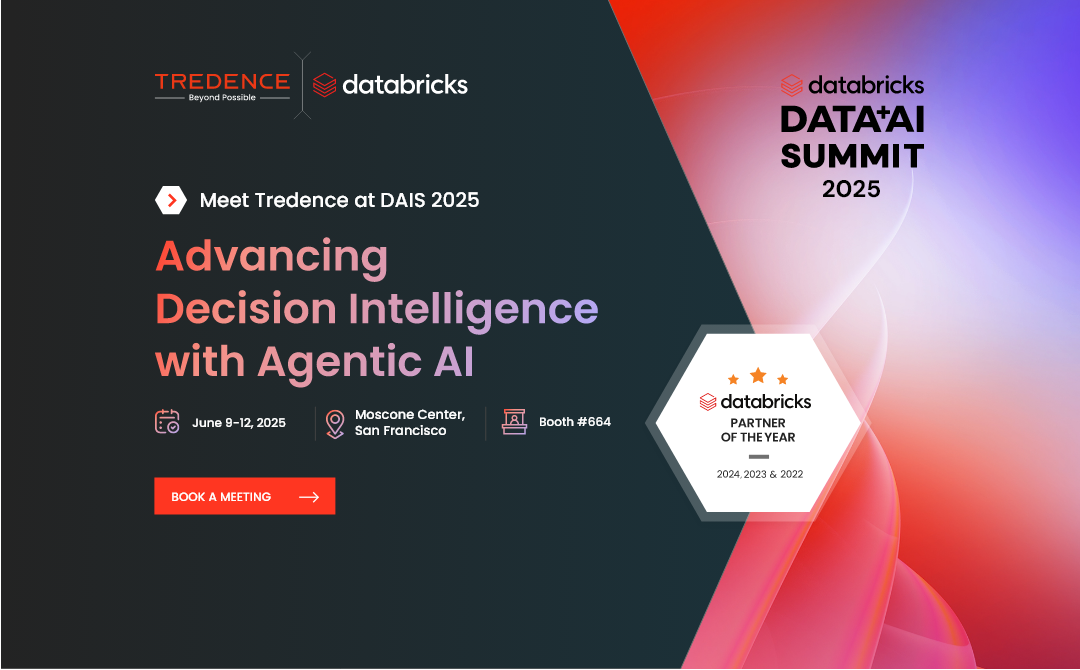
Artificial Intelligence is evolving from static prediction models to autonomous, goal-driven agents. These next-generation systems - referred to as agentic AI - incorporate advanced components like long-term memory, tool-use, multi-step reasoning, and action planning to execute complex to very complex workflows in dynamic environments for industry's most challenging problem statements.
In this blog, we will explore how to architect agentic AI solutions using Databricks, leveraging key capabilities like Mosaic AI's Vector Search, Foundation Model APIs (e.g., DBRX), and workflow orchestration with Databricks Workflows.
Databricks provides a comprehensive stack for developing agents that can observe, reason, and act over enterprise-grade datasets. Through Mosaic AI Vector Search, developers can implement high-speed, secure retrieval of semantically similar content directly integrated with Unity Catalog. Combined with hosted foundation models, secure data pipelines, and ML lifecycle tooling, Databricks is uniquely positioned to support production-grade intelligent agents.
What is Agentic AI?
Agentic AI refers to autonomous, goal-driven systems that leverage large language models (LLMs) and other components to perform complex tasks through iterative reasoning and interaction with external tools and data sources. Unlike traditional AI models that operate as stateless predictors, agentic AI systems exhibit situational awareness, persistent memory, multi-modal tool orchestration, and self-reflective planning. These systems are capable of:
- Observing: Perceiving and interpreting both structured (SQL databases, APIs) and unstructured (text, documents) environments.
- Reasoning: Using LLMs for in-context reasoning, problem decomposition, and decision-making.
- Acting: Interacting with external systems via APIs, function calls, or workflows.
- Learning: Updating internal state or memory for improved task performance over time.
At the core of agentic systems lies a reasoning engine - typically a Generative AI model - augmented by:
- Semantic retrieval mechanisms (e.g., Mosaic AI Vector Search) for knowledge grounding.
- Planning modules (e.g., ReAct, AutoGPT-style frameworks) for multi-step task execution.
- Action handlers for tool use, API invocation, and workflow control.
These systems continuously close the loop between perception, cognition, and action, allowing them to dynamically respond to evolving objectives and user interactions.
Agentic AI refers to systems that can perform actions in pursuit of a goal. Unlike traditional LLM apps that respond statically to input, agents:
- Observe the environment
- Reason for their next move
- Act using tools or APIs
- Learn or update their strategy over time
This loop - "observe → reason → act" - enables far more powerful applications, especially when grounded in enterprise data.
Databricks Agentic AI Diagram
Creating an effective AI agent system requires a structured approach to ensure it performs reliably and aligns with business goals. By breaking the process into key stages, organizations can design, deploy and manage agents that are accurate, scalable and well-governed.
Below are the core components of building an AI agent system:
By following this lifecycle - preparing data, building agents, deploying them, evaluating their performance and governing their operations - we can create a robust AI agent system that drives autonomous decision making and continuous improvement, all while ensuring that human oversight remains integral to maintaining control, transparency and ethical standards.
How is it different from Generative AI?
Generative AI (Gen AI) is focused on creating content - like text, images, or code - based on input prompts. Agentic AI, by contrast, adds layers of decision-making, memory, and tool use. In fact, most agentic AI systems use Generative AI as a core component - typically large language models (LLMs) to reason, generate intermediate steps, or interface with users.
Summary: Agentic AI uses Generative AI, but adds autonomy, tool use, and goal-driven reasoning.
Real-World Interplay: How Gen AI Powers Agentic AI
In a typical agentic AI, a Generative AI model like DBRX or GPT-4 can be used in multiple stages:
- Query Understanding: Parsing ambiguous natural language questions.
- Tool Selection: Choosing which API/tool to invoke.
- Multi-step Reasoning: Decomposing tasks (e.g., "find top 3 candidates, summarize, send email").
- Response Generation: Crafting human-readable summaries or actions.
Architecting Agentic AI on Databricks
Agentic systems require a carefully orchestrated architecture where multiple components - retrieval, memory, orchestration, and execution - interact reliably and securely. Databricks provides a modular yet unified platform to construct such robust, scalable, and intelligent agents. Here's a technical deep dive into the key building blocks:
1. Vector Search Layer with Mosaic AI
At the heart of any context-aware agent is a semantic search engine. Mosaic AI Vector Search is a Databricks-native solution that indexes documents, tables, or any unstructured content into high-dimensional embeddings and serves real-time retrieval queries. It's deeply integrated with Unity Catalog and supports Enterprise security + ACLs on indexed data, Automatic embedding generation using open or proprietary models (like DBRX), Native support for RAG pipelines via Databricks ML and DBSQL.
- Indexing: Use Mosaic AI to embed documents (text, tables, PDFs) using models like BGE, DBRX, and store embeddings in Unity Catalog-managed indexes.
- Querying: Embed user queries and retrieve top-k results using vector similarity (cosine/dot product).
- Fine-grained Security: Enforce access control via Unity Catalog on indexed data.
- Integration: Natively integrated with notebooks, workflows, and MLflow for scontext injection into agent.
2. Foundation Model APIs: The Brain of the Agent
Databricks-hosted foundation models (including DBRX, LLaMA 2, or any customized fine-tuned models) serve as the reasoning engine of agentic systems. These models can interpret user intent, generate intermediate reasoning steps, select which tool or database to invoke next, synthesize answers from retrieved content
- Hosted Models: Call DBRX or other OSS models hosted on Databricks via REST or mlflow.deployments.
- Prompt Engineering: Create reusable templates with system instructions, user queries, and vector-based context.
- Multi-turn Support: Maintain conversational state via Delta tables or MLflow memory components.
- Streaming Support: For chat-like agents, use real-time inference endpoints with streaming tokens.
3. Tool Use & Agent Orchestration with Databricks Workflows
Databricks Workflows orchestrates tool usage by allowing agents to invoke Python functions, SQL commands, or REST APIs conditionally. With Task Orchestration APIs or Python Flow Engines, agents can trigger database queries, call external APIs (e.g., ServiceNow, Salesforce), perform computations (e.g., scoring candidates, validating thresholds), loop through reasoning cycles. Tools can be wrapped up as:
- Function Registry: Register Python functions as Unity Catalog tools for API/DB calls.
- Workflow Tasks: Use Databricks Workflows to orchestrate sequences like API call → validate → summarize.
- Dynamic Tool Calling: Use planner/executor loop (e.g., LangChain Agents, ReAct) to select and run tools programmatically.
4. Agent Memory & Long-Term Context
- Short-term Memory: Store conversational state, intermediate thoughts, and tool results in memory buffers.
- Long-term Memory: Use Delta Lake tables or Vector DBs for episodic recall (past tickets, user profiles, etc.).
- Embedding Memories: Convert structured logs to embeddings for semantic retrieval in future turns.
5. Monitoring, Guardrails & Agent Ops
- Prompt Tracing: Log input/output via MLflow or Unity Catalog events.
- Toxicity/PII Filters: Apply moderation policies using wrapper models or custom filters.
- Cost & Token Tracking: Use MLflow or audit logs to monitor inference cost per request.
- Observability Dashboards: Track success/failure loops with structured logs and Delta Live Tables.
Technical Deep Dive
To build robust, scalable, and intelligent agents, Databricks provides a modular yet unified framework. Here's a technical deep dive into the key building blocks:
1. Delta Sync to Vector Index (with Mosaic AI Vector Search)
2. Vector Search Query from Playground-Compatible Function
3. Foundation Model Reasoning (DBRX via Playground)
We have integrated with the mlflow.deployments.get_deploy_client() to call:
endpoint="dbx-dbrx-instruct"
This:
- Accesses a Playground model endpoint.
- Uses the vector search results (context) to ground the prompt before sending them to the LLM.
4. Agent Behavior with Planning, Tool Use, and Memory
langchain agent wraps:
- Tool (e.g., FetchInvoice)
- Memory (ConversationBufferMemory)
- Planning logic (zero-shot-react-description)
- Inference using the Databricks Foundation Model endpoint
This agent behaves as a looping, tool-using, reasoning unit - i.e., Agentic AI.
5. MLflow Logging
Architecture
Few Optional pieces to make it more production-grade
Real-World Use Cases of Agentic AI with Mosaic AI Vector Search
Here are real-world enterprise use cases actively leveraging Databricks and Mosaic AI Vector Search to build intelligent agentic AI systems:
1. Enterprise RAG Assistants (e.g., Legal, Financial, Healthcare industries)
- Ingest millions of structured and unstructured documents.
- Index with Mosaic Vector Search.
- Enable LLMs to search contextually and answer queries with references.
- Example: Legal discovery agents, medical guideline advisors.
2. Agents for Sales Enablement
- Call transcripts, product catalogs, CRM connects.
- Embed and index all textual interactions and notes.
- Agent recommends pitch decks, competitor comparisons, or next-best actions.
3. Autonomous Analytics Bots
- Use vectorized historical business metrics + dashboards.
- Agents interpret queries like "Why did revenue drop in Q4?" → This fetches charts/data → generate insights.
4. Invoice & Billing Explainers
- Embed invoice logs and customer records.
- Vector Search helps retrieve exact document explanations.
- Foundation models generate detailed natural language summaries.
5. Training Copilots
- Embed enterprise training manuals, policies, SOPs.
- Agents can guide users through onboarding, troubleshooting, HR policies, etc.
Each of these scenarios combines semantic retrieval, foundation model reasoning, and task-specific tool use, forming the crux of what makes Agentic AI so powerful on Databricks.
Final Thoughts: Building the Future of Intelligent Systems
The convergence of vector search, foundation models, and structured orchestration layers is no longer theoretical - it's deployable, and Databricks is where it happens. Architecting Agentic AI isn't just about prompt engineering; it's about designing modular, memory-augmented, and tool-integrated reasoning systems that can evolve, adapt, and act autonomously across enterprise contexts. Agentic AI represents a transformative leap in how we approach automation - shifting from passive model predictions to proactive, autonomous agents capable of planning, and acting across complex systems.
With Databricks Mosaic AI, the vision becomes production-ready:
- Mosaic AI Vector Search enables real-time memory retrieval over structured and unstructured enterprise knowledge.
- Delta Tables + Unity Catalog bring trusted data governance, streaming updates, and fine-grained access control.
- Foundation Model APIs like DBRX power advanced reasoning and decision-making pipelines.
- Playground integration allows for low-friction prototyping, while Databricks Workflows scale to production agents.
Together, this forms an end-to-end stack that blends semantic memory, action orchestration, and LLM-based cognition - all within a unified Lakehouse platform.
As enterprise needs evolve, we'll see agentic AI driving everything from autonomous BI to customer experience optimization, to enterprise copilots that think, act, and adapt.
If GenAI was the spark, Agentic AI is the engine - and Databricks is where it runs.
Think loops, not lines.
Think systems, not models.
Think agents, not prompts.

AUTHOR - FOLLOW
Sourav Roy
Senior Manager, Data Engineering
Next Topic
Advancing Decision Intelligence with Agentic AI: Join Tredence at Databricks Data + AI Summit 2025
Next Topic




